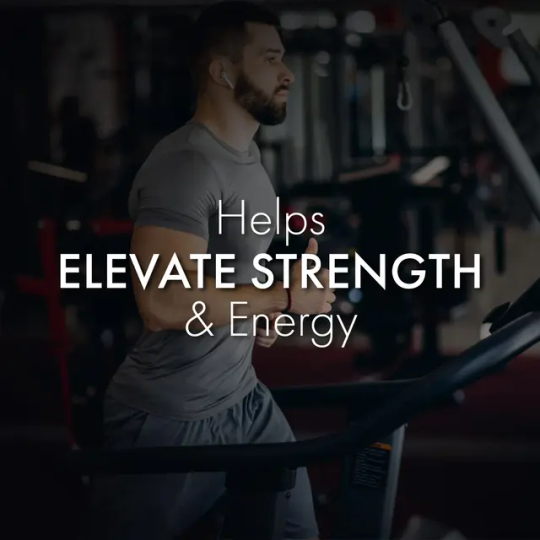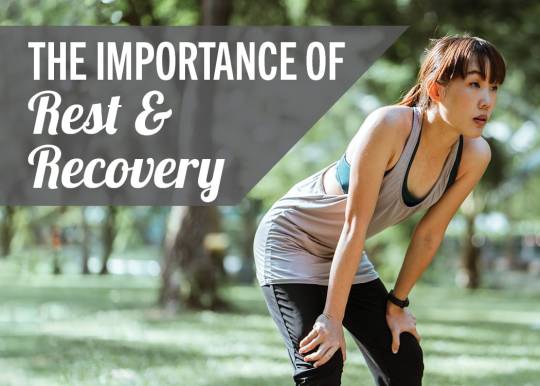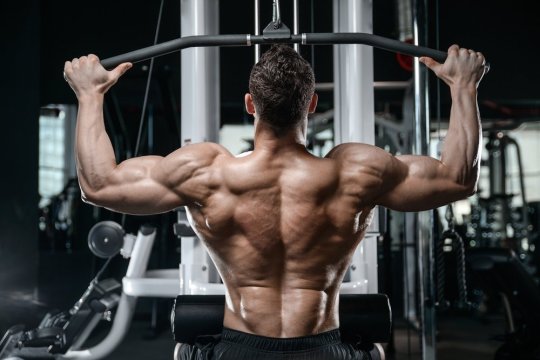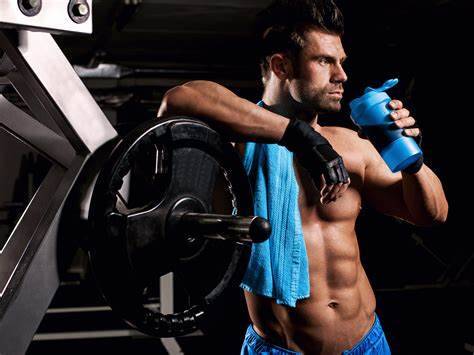Text

1 note
·
View note
Text
https://fitsfitness.in/how-to-build-endurance-a-beginners-guide/

1 note
·
View note
Text
The Importance of Recovery: How to Prevent Overtraining and Burnout. When a person starts workouts. After a few minutes that person has to recover.
0 notes
Text
Elevate your strength and stamina: Dive into intense training regimens with us
Introduction

In the sanctuary of dedication, every drop of sweat that graces your brow becomes a testament to your unwavering commitment. The weights that once seemed daunting become your allies, whispering tales of strength into your eager ears. The pulsating music fuels the fire within, urging you to push beyond what was once deemed impossible.
Together, we sculpt not only the body but also the mind, forging an unbreakable connection between the two. Your muscles may ache, but they shall awaken stronger as if infused with the very essence of perseverance. The camaraderie formed in the crucible of training binds you with fellow seekers, creating a web of support that lifts you higher.
And as the days turn into weeks and weeks into months, you shall stand at the crossroads of change. Your reflection in the mirror will not only reveal a physical transformation but a metamorphosis of the soul. The trials endured have carved a mark upon your character, a symbol of your refusal to yield.
In the realm where determination meets sweat, where the fire of ambition burns brighter than the sun, we beckon you to embark on a journey of transformation. A journey that will sculpt your body, sharpen your mind, and forge an unbreakable spirit. Welcome to the crucible of training, a realm where ordinary limitations are shattered, and extraordinary potential is unearthed.
Imagine standing at the precipice of possibility, gazing into the chasm of your own limitations. Now, envision those limits crumbling away like ancient ruins before a relentless tide. This is the essence of our intense training regimen – a symphony of sweat and effort that composes a crescendo of strength and stamina. It’s not just about the physical, but the intertwining of body and soul, pushing beyond what you thought was achievable.
As you step into this world, you’ll find yourself guided by seasoned mentors who have danced with fatigue and embraced discomfort as a partner on their path to greatness. They will challenge you, not just with weights and circuits, but with wisdom forged through countless hours of dedication. With their guidance, you’ll learn that true strength isn’t just in lifting heavy objects, but in the resilience to keep moving forward when the weight feels unbearable.
The training grounds themselves are like no other – a canvas of grit and determination. Picture yourself sprinting across a field as the sun paints the sky in hues of gold, sweat cascading like liquid determination down your brow. Feel the burn in your muscles as you power through another repetition, your heartbeat synchronizing with the rhythm of your effort. Every drop of sweat that hits the ground is a testament to your commitment, a brushstroke on the canvas of your transformation.
But this journey isn’t just about the physical. Your mind, a boundless frontier, will also undergo a metamorphosis. It will learn to embrace challenges not as obstacles, but as stepping stones. It will unravel the art of focus, honing in on the task at hand amidst distractions. As you push your body, your mind will ascend to new heights, discovering a wellspring of resilience you never knew existed.
And stamina? It will become your closest companion. You’ll find yourself enduring longer, pushing farther, and embracing discomfort with open arms. Through high-intensity intervals and heart-pounding circuits, you’ll forge an endurance that extends beyond the physical – an endurance that whispers in the face of adversity, “I am unbreakable.”
But this journey, like any masterpiece, requires time and dedication. It’s not a sprint, but a symphony that unfolds with each note of effort. There will be moments of doubt, moments when the weights feel heavier than the world itself. Yet, it’s in those moments that you’ll discover the depth of your own strength.
Conclusion
So, as you embark on this odyssey of transformation, remember that every drop of sweat, every ounce of effort, is a brushstroke on the canvas of your potential. You are not just building a more muscular body, but a stronger soul. The journey will be tough, but the reward will be worth every single step. Are you ready to dive into the abyss of your own capabilities? To emerge from the crucible of training as a phoenix of strength and stamina, soaring to heights you never dreamed possible? The choice is yours. The journey awaits. So, dare to dive into the depths of these intense training regimens, for within them lies the alchemy of transformation. Embrace the challenge, and emerge reborn, a beacon of inspiration for those who witness your journey. The path is arduous, but the rewards are boundless—elevated strength and stamina, and a spirit that knows no bounds.
#endurance training#strength training exercises for sprinting#strength training for sprinters#Strength training for triathletes
1 note
·
View note
Text
Fitness for All: Inclusive Approaches to Exercise and Wellness
Introduction
Pursuing fitness and wellness is a universal goal, but historically, the fitness industry has often been exclusive, leaving many individuals marginalized and underserved. In recent years, there has been a growing awareness of the importance of inclusive approaches to exercise and wellness. These approaches aim to create a more welcoming, accessible, and diverse fitness community that caters to people of all abilities, backgrounds, body types, and identities. This article explores the importance of fitness for all, the challenges faced by marginalized communities, and the ways in which the fitness industry can adopt inclusive practices.
The Need for Inclusive Fitness

1.1. Health Disparities
Health disparities exist across various populations due to factors such as socioeconomic status, race, ethnicity, disability, and gender identity. Access to fitness facilities, affordable programs, and health education are limited for certain communities, leading to higher rates of chronic illnesses and lower overall well-being.
1.2. Body Positivity and Mental Health
The emphasis on unrealistic beauty standards and body ideals in the fitness industry can lead to body image issues and poor mental health. Inclusive fitness practices should promote body positivity and encourage people to embrace their bodies, regardless of size or shape.
1.3. Creating a Supportive Environment
An inclusive fitness environment fosters community and support, making it easier for individuals to engage in regular physical activity. It reduces the fear of judgment and creates a space where people feel welcomed and empowered.
Challenges Faced by Marginalized Communities
2.1. Accessibility
Many fitness facilities and equipment are not designed with accessibility in mind, making it challenging for people with disabilities to participate in physical activities. Inclusive fitness should prioritize accessibility by providing adaptive equipment and accommodating spaces.
2.2. Cultural Sensitivity
Different cultures may have unique attitudes toward exercise and wellness. Inclusive fitness approaches should consider cultural diversity and offer programs that respect and celebrate these differences.
2.3. Socioeconomic Barriers
High membership fees, expensive fitness gear, and the cost of specialized training can exclude individuals with lower incomes. Inclusive fitness initiatives should strive to offer affordable options and scholarship programs.
2.4. Gender and Identity Inclusivity
The fitness industry has historically reinforced gender stereotypes, often making it unwelcoming for transgender and non-binary individuals. Inclusive fitness spaces should be safe and respectful environments for people of all gender identities.
Inclusive Fitness Practices

3.1. Educating Fitness Professionals
Fitness trainers and instructors play a crucial role in promoting inclusive practices. Training programs should include education on diversity, cultural sensitivity, and adapting exercises for different abilities.
3.2. Diverse Representation
Representation matters. The fitness industry should actively showcase diversity in marketing materials, social media, and instructor roles to create a more inclusive and relatable image.
3.3. Partnering with Community Organizations
Collaboration with community organizations can help fitness centers reach marginalized populations and offer tailored programs that address specific needs and challenges.
3.4. Creating Adaptive Fitness Programs
Developing adaptive fitness programs that cater to individuals with disabilities is essential for fostering inclusivity. These programs should consider a wide range of disabilities and provide modified exercises as needed.
3.5. Emphasizing Mental Health and Mindfulness
Inclusive fitness should not solely focus on physical fitness but also on mental well-being. Incorporating mindfulness practices, meditation, and stress-reduction techniques can benefit all participants.
Conclusion
The shift towards inclusive approaches to exercise and wellness is a necessary and positive change in the fitness industry. By acknowledging and addressing the challenges faced by marginalized communities, the fitness community can become a more welcoming and empowering space for everyone. Embracing diversity, promoting accessibility, and fostering a sense of community will not only improve physical health but also enhance mental well-being, contributing to a healthier and happier society overall. By promoting fitness for all, we can take significant strides toward building a more inclusive and equitable world.
#balance exercises for elderly#balance exercises for seniors#exercises for balance#fitness and exercise program#exercises to improve balance
1 note
·
View note
Text
Fueling Your Fitness: Nutrition Tips for Optimal Performance
Introduction
Whether you’re an avid athlete, a fitness enthusiast, or just someone looking to improve their physical performance, nutrition plays a vital role in achieving your fitness goals. Proper nutrition not only helps you maintain a healthy weight but also optimizes your energy levels, enhances recovery, and supports overall well-being. In this long-form content, we’ll explore essential nutrition tips to help you fuel your fitness and perform at your best.
Understand Your Caloric Needs:

Prioritize Balanced Meals:
A balanced diet is essential for overall health and fitness. Focus on incorporating a variety of nutrient-dense foods into your meals, including:
a. Proteins: Proteins are the building blocks of muscle and are essential for tissue repair. Include lean sources such as chicken, turkey, fish, tofu, beans, and legumes in your diet.
b. Carbohydrates: Carbohydrates are the primary energy source for your body. Opt for complex carbohydrates like whole grains, fruits, vegetables, and sweet potatoes, as they provide sustained energy.
c. Fats: Healthy fats support hormone production and nutrient absorption. Include sources like avocados, nuts, seeds, olive oil, and fatty fish in your diet.
Hydration is Key:
Proper hydration is often underestimated but is crucial for optimal athletic performance. Dehydration can lead to decreased energy levels, impaired cognitive function, and reduced exercise performance. Aim to drink at least 8-10 glasses of water per day and increase your intake during intense workouts.
Pre-Workout Nutrition:
Eating the right foods before a workout can provide the energy and stamina needed to perform at your best. Consume a balanced meal containing carbohydrates and protein about 2-3 hours before exercise. This allows time for digestion and absorption. If you have less time, opt for easily digestible snacks like a banana with nut butter or a protein smoothie.
Fueling During Exercise:
For prolonged workouts or intense training sessions lasting more than an hour, consider fueling with easily digestible carbohydrates. Sports drinks, energy gels, or chews can provide a quick energy boost to maintain performance levels.
Post-Workout Recovery:
After exercise, your body requires proper nutrients for recovery and repair. Focus on consuming a meal rich in protein and carbohydrates within an hour of completing your workout. This aids in muscle recovery and replenishes glycogen stores for your next session.
The Importance of Protein:
Protein is essential for muscle repair and growth, making it a vital component of any fitness-focused diet. Distribute your protein intake throughout the day to support continuous muscle protein synthesis. Aim for a variety of protein sources to get a complete amino acid profile.
Don’t Skip Meals:
Skipping meals can lead to decreased energy levels and impaired performance. Make sure to have regular meals and snacks throughout the day to maintain stable blood sugar levels and support your body’s nutritional needs.
Consider Nutritional Supplements:
Consult with a healthcare professional or dietitian to determine if you have any specific nutrient deficiencies or if supplements could be beneficial for your performance.
Listen to Your Body:
Every individual is unique, and nutritional needs can vary based on genetics, metabolism, and activity levels. Keep a food diary to track your meals and assess how they impact your performance and overall well-being.
Get Adequate Rest:
Ensure you get enough sleep each night, as it plays a significant role in muscle repair, hormone regulation, and mental focus.
Avoid Fad Diets:
Avoid falling for fad diets that promise quick results. They often lack essential nutrients and can be detrimental to your health and athletic performance in the long run. Instead, focus on sustainable, balanced eating habits.
Nutrition Counseling:

Assessment: The counselor evaluates the individual’s current dietary habits, lifestyle, medical history, and fitness goals. This assessment helps in understanding the person’s nutritional needs and identifying areas that need improvement.
Personalized Recommendations: Based on the assessment, the counselor develops a personalized nutrition plan that takes into account the individual’s calorie and macronutrient requirements, as well as specific nutrient needs. This plan is tailored to support the person’s fitness goals and can vary widely depending on whether the goal is fat loss, muscle gain, or performance enhancement.
Education: Nutrition counseling involves educating individuals about the importance of balanced nutrition, nutrient-rich foods, portion control, and proper hydration. Clients learn how different nutrients affect their bodies and how to make healthier food choices.
Behavior Change: Changing dietary habits can be challenging. Nutrition counseling often includes strategies to help individuals adopt sustainable and realistic dietary changes. This might involve setting achievable goals, addressing emotional eating, and finding ways to overcome barriers to healthy eating.
Monitoring and Adjustments: Nutrition counselors work with individuals over time, monitoring their progress and making adjustments to their nutrition plan as needed. This could involve tweaking macronutrient ratios, adjusting calorie intake, or modifying meal timing to optimize results.
Support and Accountability: Nutrition counselors provide ongoing support and motivation to help individuals stay on track with their dietary changes. They serve as a source of accountability and guidance, offering solutions to challenges that may arise.
Evaluating Progress: Regular check-ins and assessments help individuals and their nutrition counselors evaluate progress toward fitness goals. Adjustments can be made based on changes in body composition, energy levels, performance, and overall well-being.
Conclusion
In conclusion, proper nutrition is the foundation of optimal fitness performance. By understanding your caloric needs, prioritizing balanced meals, staying hydrated, and supporting your body with the right nutrients, you can fuel your fitness journey effectively. Remember to listen to your body, get adequate rest, and avoid falling for fad diets. For personalized guidance, consider consulting with a registered dietitian who can create a nutrition plan tailored to your specific goals and needs.
#athletic performance#Fitness#fitness journey#fueling your workout with nutrition#importance of nutrition for health#nutrition basics sports performance
1 note
·
View note
Text
Get Fit and Stay Healthy: The Ultimate Guide to Gym Training and Diet Tip
Introduction
Hey there, fitness enthusiasts. Are you ready for the ultimate guide to crushing your gym training and diet goals? Buckle up and get ready to sweat those calories away. In this blog, we’ll dive deep into the nitty-gritty of training tips, diet hacks, motivation boosters, recovery tactics, and even the truth behind dietary supplements. So put on your workout shoes, grab a protein shake (or a cup of coffee if that’s your thing), and let’s get started on this exciting journey to a healthier and fitter you! Let the gains begin.

Training Tips:
So you’ve finally decided to hit the gym, huh? Well, kudos to you for taking the first step toward a fitter lifestyle! Now, let’s dive into some essential training tips that will help you make the most out of your gym sessions.
First things first, pick a workout plan that suits your goals. Whether you want to become the next Arnold Schwarzenegger (or perhaps just shed a few pounds), having a plan in place will keep you focused and motivated. And no, random exercises scribbled on a piece of paper won’t cut it. Get yourself a structured program designed by a professional.
Before you jump straight into lifting weights, start with a warm-up. Yes, we all know warm-ups can be boring, but they serve a purpose! Warming up increases your heart rate, loosens up your muscles, and gets your body ready for the intense workout ahead. Trust me, your muscles will thank you later.
Now, let’s talk about proper form. If you’re lifting weights and performing exercises with incorrect form, you’re basically asking for trouble. Not only will you fail to target the right muscles, but you also risk injury. So, pay attention to your form, watch some tutorial videos, and always ask for help if needed.
As you progress, gradually increase weight and intensity. Don’t be that person who tries to bench press their own body weight on the very first day (unless you’re Superman, of course). Build up your strength and endurance over time. Rome wasn’t built in a day, and neither is your dream physique.
Listen to your body. If you feel pain or discomfort during a workout, stop! There’s a fine line between pushing through a challenging moment and pushing yourself toward injury. Take breaks when needed and give your body the rest it deserves.
Lastly, stay consistent. There’s no point in hitting the gym for a week and then disappearing for a month. Consistency is key when it comes to achieving your fitness goals. So, schedule your workouts, make them a non-negotiable part of your routine, and remember that progress takes time.
Diet Tips:
Ah, diet tips. The holy grail of any fitness journey. So, you’ve decided to take the plunge and delve into the world of healthier eating habits. Good for you! But hold on, before you go on a binge of kale smoothies and quinoa salads, let’s talk about some key points that you should definitely keep in mind.
Firstly, let’s tackle the concept of a balanced diet. What does that even mean? Well, it’s basically about eating a variety of foods from different food groups. You know, the stuff that actually grows naturally and is not processed beyond recognition. Fruits, vegetables, lean proteins, whole grains – these should be your best friends.
Now, let’s talk protein. No, I’m not going to suggest you go all out and become a bodybuilder overnight, but consuming enough protein is crucial for muscle repair and growth. Chicken, fish, eggs, tofu, or if you’re feeling fancy some cricket protein. Hey, don’t knock it ’til you’ve tried it.
Ah, hydration, the elixir of life. Your body needs water to function properly, so make sure you’re drinking enough of it. Forget about those sugary drinks and fill up that fancy water bottle of yours.
Portion control is the secret weapon when it comes to maintaining a healthy weight. So, listen up – put down that oversized plate and take a moment to assess how much you’re eating. It’s not a competition, you know.
Next up, pre and post-workout meals. Yes, they are important. Think of these meals as little boosters to help you power through your workouts and recover afterward. A banana, a handful of nuts, or even a protein shake can do the trick. Just don’t forget about them, okay?
And finally, the often-dismissed rest days. Rest is not a sign of weakness, my friend. It’s an essential part of the process. So, embrace those rest days and give your body some well-deserved TLC. Trust me, it will thank you.

Motivation and Mindset:
Set realistic goals: Look, we all want to look like Greek gods or goddesses in the gym, but let’s be real here. Unless you have superhuman genetics, that’s not going to happen overnight. Instead of setting yourself up for disappointment, set achievable goals. Maybe aim to increase your weight by a few pounds each week or run a little longer on the treadmill. Small victories lead to big wins!
Find a workout buddy: Working out alone can be boring, I get it. Plus, who’s going to spot you when you’re struggling with those heavy weights? Not only will they hold you accountable, but you’ll also have someone to share in your triumphs and failures. Plus, having a spotter means you won’t end up stuck under a barbell like a stranded turtle.
Reward yourself: Yes, I said it. Treat yourself! It’s important to celebrate your progress along the way. Reach a milestone? Buy those cute workout leggings you’ve had your eye on. Crush a personal record? Enjoy a cheat meal without guilt. Rewarding yourself keeps you motivated and reminds you that all those sweat sessions are worth it.
Push through plateaus: Plateaus are every gym-goers worst nightmare. It’s like hitting a brick wall after seeing progress for weeks. Push through those plateaus by mixing up your routine, trying new exercises, or adding more intensity. Your body will eventually catch on and start making gains again. It’s all about outsmarting your muscles!
Be patient with progress: Rome wasn’t built in a day, and neither is a chiseled physique. It takes time, so be patient with yourself. Results won’t show up overnight, but they will come if you stick with it. Trust the process and keep hustling in the gym. Remember, slow and steady wins the race. And hey, you’re one step closer to your fitness goals than you were yesterday.

Recovery and Rest:
Ah, recovery and rest, the long-awaited respite from the sweat and tears of intense gym sessions. It’s that magical time when your muscles get a chance to repair and grow, and you can catch up on the sleep you’ve been missing out on. But let’s not go overboard with the rest and end up becoming like a couch potato, shall we? Here are some key pointers to help you make the most of your recovery and rest days without turning into a sloth.
Firstly, incorporate active recovery into your routine. Don’t just sit around and binge-watch your favorite TV shows all day. Instead, engage in low-intensity activities like walking, swimming, or yoga to get your blood flowing and aid the recovery process.
Listen to your body’s signals. If you’re feeling sore or fatigued, it’s probably your body telling you to take it easy. Ignoring those signals might lead to burnout or even injury, so be mindful of what your body needs.
Quality sleep is crucial for muscle repair and overall well-being. So make sure you’re getting enough shut-eye. Put away your phone, create a relaxing sleep environment, and let yourself drift off into dreamland.
Rest days are NOT a sign of weakness. They are a necessary part of any successful fitness journey. Your body needs time to recover and rebuild. So don’t be afraid to schedule those rest days and give yourself permission to laze around guilt-free.
Lastly, stretching should never be neglected. It helps improve flexibility, reduces muscle soreness, and prevents injuries. So, don’t skip those post-workout stretches, and embrace the yogi within you.

Dietary Supplements:
Ah, dietary supplements, are the holy grail of fitness enthusiasts everywhere. Let’s dive into this murky world of powders and pills, shall we?
First and foremost, do your research! Go down the rabbit hole of online reviews and forums, and make sure you’re not falling for any snake oil sales pitches. There are plenty of supplement companies out there promising you the body of a Greek god, but you gotta separate fact from fiction.
Next, consult a healthcare professional. Yeah, your buddy Steve might swear by that new protein powder, but that doesn’t mean it’s right for you. Talk to a doctor or a nutritionist who can give you personalized advice based on your specific needs and health conditions.
Remember, quality over quantity. Don’t just grab any random supplement off the shelf because it’s cheap or comes in a fancy package. Look for reputable brands that prioritize ingredient quality and manufacturing standards.
But here’s the kicker: don’t solely rely on supplements. They’re called supplements for a reason; they should complement a healthy diet and exercise routine, not replace them entirely. Focus on getting most of your nutrients from whole foods and use supplements as, well, supplements.
So, there you have it. The world of dietary supplements can be a confusing and overwhelming place, but armed with knowledge and a healthy dose of skepticism, you can make informed decisions that support your fitness goals. Now go out there and flex those supplement-shopping muscles!
Conclusion
So, we’re finally at the end of this ultimate guide to gym training and diet tips. Phew! It’s been quite a journey, hasn’t it? Let’s quickly recap some of the key points we’ve discussed so far, just to make sure they stay etched in your mind.
Firstly, we learned about the importance of picking a workout plan that aligns with your goals. Remember, you can’t expect to look like Arnold Schwarzenegger overnight (unless you’ve got some secret potion hidden away).
Gradually increasing weight and intensity, listening to your body, and staying consistent were some other gems of wisdom we shared. Moving on to the diet tips, we discussed the importance of balance (yes, even in your diet) and ensuring you get enough protein. No, I’m not suggesting you become a chicken-breast-devouring machine. Staying hydrated, watching your portion sizes, and having pre and post-workout meals became our focus.
#10 fitness secrets tips and tricks#advanced guide to losing fat#beginner's guide to fatloss#healthy lifestyle#minimalist training guide#Skinny to muscle transformation
0 notes
Text
Unlocking the Benefits of HIIT: High-Intensity Interval Training Demystified
Introduction:

Understanding HIIT:
How it Works: HIIT revolves around the concept of pushing your body to its limits during high-intensity intervals, followed by active recovery or rest periods. The goal is to elevate your heart rate to near-maximum levels during the intense phases and then allow it to recover partially during the low-intensity phases. This cycle of exertion and recovery creates a powerful stimulus for the body, leading to a range of physiological adaptations.
Here’s how a typical HIIT session may look:
Warm-up: A brief 5-10 minute warm-up to prepare the body for the intense workout ahead.
High-Intensity Interval: 30-60 seconds of an all-out effort in exercises like sprinting, jumping jacks, burpees, or cycling.
Recovery Period: 30-60 seconds of low-intensity activity, like walking or slow jogging.
Repeat: The high-intensity recovery cycle is repeated for 15-30 minutes.
Cool-down: A 5-10 minute cool-down with stretching to bring the heart rate back to normal gradually.
Benefits of HIIT:
Time Efficiency: HIIT is perfect for those with busy schedules. Since it involves short bursts of intense exercise, you can achieve the same or even better results compared to traditional workouts in much less time.
Improved Cardiovascular Health: HIIT increases your heart rate and challenges your cardiovascular system. Over time, this can improve heart health, increase stroke volume, and enhance oxygen utilization.
Calorie Burn and Weight Loss: HIIT workouts can lead to a significant calorie burn during and after the exercise session due to the “afterburn effect” or excess post-exercise oxygen consumption (EPOC).
Preservation of Muscle Mass: Unlike some traditional forms of cardio, HIIT helps preserve lean muscle mass while promoting fat loss. This is crucial for maintaining a healthy metabolism.
Metabolic Health: HIIT can improve insulin sensitivity and glucose regulation, which is beneficial for individuals at risk of type 2 diabetes or metabolic syndrome.
Increased Endurance and Performance: Regular HIIT can enhance your aerobic and anaerobic capacity, leading to improved overall athletic performance.
Minimal Equipment Required: HIIT workouts can be designed using bodyweight exercises, making them accessible to everyone, regardless of access to gym equipment.
No Boredom, Endless Variety: With countless exercises and combinations available, HIIT workouts are far from monotonous, keeping participants engaged and motivated.
Adaptable to All Fitness Levels: HIIT workouts can be modified to suit individual fitness levels, making them suitable for beginners and advanced athletes alike.
Elevated Metabolism: HIIT stimulates the production of growth hormones, which can have a positive impact on metabolism and overall energy expenditure.
Safety Considerations:
While HIIT offers numerous benefits, it’s essential to consider safety when incorporating it into your routine:
Consult Your Doctor: If you’re new to exercise or have any underlying health conditions, consult your doctor before starting any HIIT program.
Proper Warm-up and Cool-down: Always warm up adequately before the high-intensity phase, and cool down properly after the session to prevent injuries.
Start Slowly: If you’re a beginner, begin with shorter intervals and gradually increase the intensity and duration over time.
Listen to Your Body: Pay attention to how your body responds to the workouts. It’s okay to push yourself but avoid overtraining or ignoring pain signals.
Stay Hydrated: Drink water before, during, and after the workout to stay hydrated.
Incorporating HIIT into Your Routine:
Here are some tips to help you integrate HIIT effectively into your fitness routine:
Frequency: Aim for 2-3 HIIT sessions per week, allowing adequate rest between sessions for recovery.
Varied Exercises: Mix up the exercises to keep it interesting and target different muscle groups.
HIIT and Strength Training: Combine HIIT with strength training for a well-rounded fitness regimen.
Progressive Overload: Gradually increase the intensity or duration of your intervals to continue challenging your body.
Recovery Days: Don’t forget to include rest or active recovery days in your weekly schedule.
Conclusion:
HIIT is a powerful and time-efficient training method that offers numerous benefits for fitness enthusiasts and beginners. By incorporating HIIT into your fitness routine and adhering to safety guidelines, you can unlock its potential to enhance cardiovascular health, boost metabolism, burn calories, and improve overall athletic performance. So, why wait? Get ready to take your workouts to the next level with the power of High-Intensity Interval Training. Always remember to listen to your body, stay consistent, and enjoy the journey to a fitter and healthier you!
#alternative medicine#functional training#daily vlog aesthetic#functional training book#gauge girl training#the world's greatest stretch
0 notes
Text
The Ultimate Guide to Fitness Training: Achieve Your Health and Wellness Goals
Introduction:
Physical health: Regular exercise and fitness training improve cardiovascular health, strengthen muscles and bones, enhance flexibility and mobility, and support healthy body weight management. Engaging in physical activity reduces the risk of chronic diseases such as heart disease, diabetes, obesity, and certain types of cancer.
Mental health and mood enhancement: Exercise has a positive impact on mental health by reducing symptoms of anxiety, depression, and stress. Physical activity stimulates the release of endorphins, often referred to as “feel-good” hormones, which can improve mood and overall mental well-being. Fitness training can also boost self-esteem and body confidence.
Cognitive function and brain health: Physical activity has been linked to improved cognitive function, including enhanced memory, attention, and problem-solving abilities. Regular exercise promotes neuroplasticity, which is the brain’s ability to adapt and form new connections. It can also reduce the risk of cognitive decline and improve overall brain health.
Energy and stamina: Fitness training improves endurance and stamina, allowing you to perform daily activities more efficiently and with less fatigue. Regular exercise increases oxygen and nutrient supply to the body’s tissues, boosting energy levels and reducing feelings of fatigue.
Weight management: Fitness training, combined with a healthy diet, is an effective approach to achieving and maintaining a healthy body weight. Engaging in regular physical activity helps burn calories, increases lean muscle mass, and builds metabolism. It can also help prevent weight gain and assist in weight loss efforts.
Disease prevention and management: Regular exercise plays a significant role in preventing and managing various chronic conditions, including cardiovascular diseases, type 2 diabetes, certain types of cancer, and osteoporosis. Physical activity improves blood circulation, lowers blood pressure, regulates blood sugar levels, and strengthens the immune system.
Social connections and community: Participating in fitness training can provide opportunities to connect with others who share similar interests. Whether it’s joining group fitness classes, sports teams, or fitness communities, exercising with others can enhance social interactions, provide support, and promote a sense of belonging.
Longevity and quality of life: Engaging in regular fitness training has been associated with increased longevity and improved quality of life. By maintaining physical fitness, individuals can maintain their independence, perform daily activities with ease, and enjoy an active and fulfilling lifestyle as they age.

FITNESS TRAINING:
Fitness training is the process of engaging in physical exercise and activities to improve one’s overall health, strength, endurance, flexibility, and cardiovascular fitness. It is an essential component of a healthy lifestyle and can be pursued for various goals, such as weight loss, muscle gain, improved athletic performance, or general well-being.
When designing a fitness training program, it’s important to consider your current fitness level, goals, and any specific limitations or medical conditions you may have. Here are some key components to include in a well-rounded fitness training regimen:
Cardiovascular Exercise: This type of exercise raises your heart rate and helps improve cardiovascular health. It can include activities like running, cycling, swimming, brisk walking, or using cardio machines at the gym.
Strength Training: This can involve using weights, resistance bands, or bodyweight exercises like push-ups, squats, and lunges. Aim for two or more days of strength training per week, targeting major muscle groups.
Flexibility and Stretching: Stretching exercises improve flexibility, and joint range of motion, and help prevent injuries. Include dynamic stretches (moving stretches) before a workout and static stretches (holding a stretch) after your workout or as a separate session. Yoga and Pilates can also be beneficial for flexibility.
Balance and Stability: Training for balance and stability helps improve coordination and posture, and reduces the risk of falls. Exercises like standing on one leg, using balance boards, or practicing yoga poses can enhance these skills.
Rest and Recovery: Allow your body sufficient time to rest and recover between workouts. This allows muscles to repair and grow stronger. Get enough sleep, maintain a balanced diet, and listen to your body to avoid overtraining and injuries.
Progressive Overload: Gradually increase the intensity, duration, or frequency of your workouts to challenge your body and continue making progress. This principle of progressive overload helps prevent plateaus and ensures ongoing improvement.
Benefits of fitness:
Fitness offers numerous benefits for both physical and mental well-being. Here are some key benefits of engaging in regular fitness activities:
Improved physical health: Regular exercise and physical activity can help improve cardiovascular health, increase stamina, strengthen muscles and bones, and enhance overall physical fitness. It can also reduce the risk of chronic diseases such as heart disease, diabetes, obesity, and certain types of cancer.
Weight management: Engaging in physical activities, such as aerobic exercises, resistance training, and sports, can help with weight management by burning calories, increasing metabolism, and promoting the development of lean muscle mass.
Enhanced mental well-being: Physical activity can improve mood, boost self-esteem, and contribute to better mental health and overall emotional well-being.
Increased energy levels: It improves circulation, oxygen flow, and the efficiency of various bodily systems, which can result in increased energy and productivity throughout the day.
Better sleep quality: Engaging in regular exercise can promote better sleep patterns and improve the quality of sleep. It helps regulate the sleep-wake cycle and can reduce insomnia and other sleep disorders.
Enhanced cognitive function: Physical activity has been linked to improved cognitive function, memory, and concentration. It can enhance brain health, stimulate the growth of new brain cells, and improve overall cognitive performance.
Disease prevention: Regular exercise and physical activity can help reduce the risk of various diseases, including cardiovascular diseases, type 2 diabetes, certain types of cancer, osteoporosis, and age-related cognitive decline.
Increased longevity: Leading an active lifestyle and maintaining physical fitness have been associated with increased longevity. Regular exercise can improve overall health, reduce the risk of chronic diseases, and promote healthy aging.
Social benefits: Participating in fitness activities, such as group classes, sports teams, or outdoor activities, can provide opportunities for social interaction, networking, and building new relationships. It can foster a sense of community and support, enhancing overall well-being.
Improved quality of life: Fitness contributes to an overall improved quality of life by promoting physical health, mental well-being, increased energy, better sleep, and a positive outlook. It enhances one’s ability to perform daily tasks, reduces the risk of injury, and allows for greater participation in recreational and leisure activities.
Importance of fitness:
Fitness is incredibly important for overall health and well-being. Engaging in regular physical activity and maintaining a good level of fitness has numerous benefits for both the body and mind. Here are some key reasons why fitness is important:
Physical Health: Regular exercise and fitness activities help maintain a healthy body weight, strengthen muscles and bones, improve cardiovascular health, and enhance overall physical endurance. It reduces the risk of chronic diseases such as obesity, diabetes, heart disease, and certain types of cancer.
Mental Health: Fitness plays a crucial role in promoting mental well-being. Exercise releases endorphins, which are known as “feel-good” hormones that can boost mood and reduce symptoms of stress, anxiety, and depression. It improves cognitive function, memory, and promotes better sleep, leading to enhanced mental clarity and focus.
Energy and Stamina: Regular fitness activities improve energy levels and increase stamina. Engaging in physical exercise enhances the efficiency of the cardiovascular system, delivering oxygen and nutrients to the body’s tissues more effectively. This results in increased energy levels, allowing individuals to perform daily tasks with ease and tackle physical challenges more effectively.
Weight Management: Maintaining a healthy weight is crucial for overall health and fitness. Regular exercise, combined with a balanced diet, helps burn calories, build lean muscle mass, and increase metabolism, contributing to weight loss or weight maintenance. It also helps prevent weight regain after losing weight.
Disease Prevention: Regular physical activity is linked to a reduced risk of various diseases. It helps prevent or manage conditions such as high blood pressure, type 2 diabetes, stroke, certain types of cancer, and metabolic syndrome. Fitness activities also support a healthy immune system, reducing the likelihood of infections and illness.
Longevity and Aging: Fitness has been associated with a longer and healthier lifespan. Regular exercise can slow down the aging process, improve longevity, and enhance overall quality of life in older adults. It helps maintain mobility, flexibility, and balance, reducing the risk of falls and injuries.
Confidence and Self-esteem: Regular exercise and physical fitness can boost self-confidence and improve self-esteem. Achieving fitness goals, building strength and endurance, and witnessing physical improvements contribute to a positive body image and enhanced self-worth.
Social Connections: Fitness activities often provide opportunities for social interaction and connection. Engaging in group exercise classes, team sports, or fitness communities allows individuals to meet like-minded people, build friendships, and develop a sense of community.
The Different Types of Fitness Training Methods for Every Goal
Cardiovascular training:
Cardiovascular training, also known as cardio or aerobic exercise, is a type of physical activity that focuses on increasing the efficiency and endurance of your cardiovascular system. It involves rhythmic, repetitive movements that elevate your heart rate and increase oxygen consumption, thereby improving the health of your heart, lungs, and circulatory system.
Benefits of Cardiovascular Training:
Increased Stamina and Endurance: Regular cardio training improves your body’s ability to utilize oxygen, allowing you to engage in physical activities for longer durations without feeling tired. This increased stamina is beneficial for everyday tasks and sports performance.
Weight Management: Cardio exercises burn calories and can aid in weight loss or weight maintenance by creating a calorie deficit. Engaging in activities like running, cycling, swimming, or brisk walking can help you shed excess body fat and maintain a healthy weight.
Reduced Risk of Chronic Diseases: Regular cardiovascular training can lower the risk of developing various chronic conditions, including type 2 diabetes, certain types of cancer, and metabolic syndrome.
Improved Mood and Mental Health: Cardiovascular exercise releases endorphins, often referred to as “feel-good” hormones, which can elevate your mood, reduce stress, and alleviate symptoms of anxiety and depression.
Types of Cardiovascular Training:
Running/Jogging: Running or jogging is a popular and effective form of cardio exercise. It can be done outdoors or on a treadmill and requires minimal equipment.
Cycling: Whether you prefer outdoor biking or indoor stationary cycling, this activity provides an excellent cardiovascular workout while being gentle on the joints.
Swimming: Swimming is a low-impact, full-body workout that improves cardiovascular fitness, muscular strength, and flexibility.
HIIT (High-Intensity Interval Training): HIIT involves short bursts of intense exercise followed by brief recovery periods. This type of training can be performed with various exercises such as burpees, jumping jacks, or mountain climbers, and helps improve cardiovascular fitness in a shorter amount of time.
Aerobics and Group Classes: Joining aerobics classes, dance workouts, or group fitness classes like Zumba can be an enjoyable way to improve cardiovascular fitness while having fun with others.
Rowing: Rowing machines provide a challenging total-body workout that engages multiple muscle groups and boosts cardiovascular endurance.
It’s important to choose cardiovascular activities that you enjoy and that suit your fitness level and physical capabilities. If you have any underlying health conditions or concerns, it’s always recommended to consult with a healthcare professional before starting a new exercise program.
Strength Training:
Strength training is a type of physical exercise that focuses on building and improving muscular strength and endurance. It involves performing exercises with resistance, such as weights, resistance bands, or bodyweight, to challenge and overload the muscles.
Muscle Strength: Strength training helps increase muscle strength by placing stress on the muscles, forcing them to adapt and grow stronger. This is achieved through progressive overload, gradually increasing the resistance or intensity of the exercises over time.
Muscle Endurance: Strength training also improves muscle endurance, which refers to the ability of muscles to perform repetitive contractions over an extended period. This is particularly beneficial for activities that require prolonged muscular effort, such as running, cycling, or even everyday tasks.
Body Composition: Strength training plays a significant role in improving body composition. As muscles are more metabolically active than fat, having a higher muscle-to-fat ratio can boost metabolism and overall calorie expenditure, even at rest.
Bone Health: Strength training is crucial for maintaining and improving bone health. Weight-bearing exercises, such as squats, lunges, and deadlifts, stimulate the bones and help prevent conditions like osteoporosis, especially in older adults.
Injury Prevention: Strengthening the muscles, tendons, and ligaments through resistance training can help prevent injuries. By improving joint stability, balance, and overall muscular strength, individuals are less prone to strains, sprains, and other common injuries during physical activities.
Functional Fitness: Strength training improves functional fitness, which refers to the ability to perform daily activities efficiently and with reduced risk of injury.
Mental Health Benefits: Engaging in strength training can have positive effects on mental well-being. Exercise, in general, releases endorphins, which are natural mood elevators. Strength training can also boost self-confidence, improve body image, reduce anxiety and depression, and enhance overall cognitive function.
When incorporating strength training into your fitness routine, it’s important to consider factors like proper form and technique, gradual progression, adequate rest and recovery, and consulting with a qualified fitness professional if needed. They can provide guidance on creating a personalized program tailored to your goals, fitness level, and any specific considerations or limitations you may have.
Flexibility training:
Flexibility training, also known as stretching, is an essential component of fitness that focuses on improving the range of motion and flexibility of your muscles and joints. It involves performing various stretching exercises to lengthen and stretch the muscles, tendons, and ligaments. Here are some key aspects of flexibility training:
Range of Motion: Flexibility training helps increase the range of motion of your joints, allowing you to move more freely and efficiently. By improving flexibility, you can perform daily activities with greater ease and reduce the risk of muscle imbalances and injuries.
Muscle Elasticity: Stretching exercises promote muscle elasticity, which refers to the ability of muscles to stretch and return to their original length. Flexible muscles are less prone to strains and tears during physical activities or sports.
Posture and Alignment: Regular flexibility training can improve posture and alignment by correcting muscle imbalances and reducing muscle tension. It helps lengthen tight muscles and alleviate common postural issues, such as rounded shoulders or excessive curvature of the spine.
Injury Prevention: Flexible muscles and joints are less susceptible to injuries. By maintaining an adequate range of motion, you decrease the likelihood of muscle strains, joint sprains, and other musculoskeletal injuries.
Improved Performance: Flexibility training can enhance overall physical performance in various activities. It allows you to move more efficiently, with greater power and control. For athletes, improved flexibility can contribute to better sports performance and reduced risk of performance-related injuries.
Muscle Recovery: Stretching exercises can aid in muscle recovery after intense workouts. They help increase blood flow to the muscles, which delivers oxygen and nutrients, and remove waste products. Stretching can also alleviate muscle soreness and stiffness, promoting faster recovery.
Relaxation and Stress Relief: Stretching has a relaxing effect on the body and mind. It can help reduce muscle tension, relieve stress, and promote relaxation. Incorporating stretching exercises into your fitness routine can be a valuable tool for managing stress and promoting overall well-being.
When engaging in flexibility training, it’s important to remember a few key principles:
Warm-up: Always perform a light warm-up before stretching to increase blood flow to the muscles and prepare them for stretching.
Proper Technique: Use proper form and technique during stretching exercises to maximize effectiveness and minimize the risk of injury. Avoid bouncing or jerking movements and focus on a slow, controlled stretch.
Balance: Work on improving flexibility in all major muscle groups and both sides of the body to maintain balance and prevent muscle imbalances.
Gradual Progression: Gradually increase the intensity and duration of your stretches over time. Avoid pushing yourself too hard and respect your body’s limits.
Consistency: Regularity is key when it comes to flexibility training. Aim to incorporate stretching exercises into your fitness routine at least two to three times per week.
If you’re unsure about the appropriate stretches or techniques for your specific needs, consulting with a qualified fitness professional or a certified stretching instructor can be beneficial. They can guide you through proper stretching routines and provide personalized recommendations based on your goals and limitations.
#Cardiovascular Training#Cycling#Flexibility training#Mental Health Benefits#Muscle Endurance#Strength Training
1 note
·
View note
Text

Introduction:
As the fitness industry continues to evolve, new trends and training methods emerge, capturing the attention of fitness enthusiasts and professionals alike. In recent years, High-Intensity Interval Training (HIIT) has gained significant popularity and is set to dominate the fitness scene in 2023. HIIT is a highly effective workout method that combines short bursts of intense exercise with brief recovery periods, delivering numerous benefits in a time-efficient manner. In this article, we will delve into the world of HIIT and explore why it is poised to be the top fitness trend of 2023.
1.Efficient and Time-Saving:
In our fast-paced lives, finding time for exercise can be challenging. This is where HIIT shines. HIIT workouts typically last between 15 to 30 minutes, making them highly efficient and time-saving. The intense bursts of exercise elevate the heart rate and engage multiple muscle groups, maximizing calorie burn and improving cardiovascular fitness. With HIIT, individuals can achieve significant results in a fraction of the time compared to traditional steady-state cardio or longer-duration workouts.
2. Increased Calorie Burn and Fat Loss:
HIIT workouts are known for their ability to torch calories and promote fat loss. The high-intensity nature of the exercises elevates the metabolism, resulting in an “afterburn effect” known as excess post-exercise oxygen consumption (EPOC). EPOC causes the body to continue burning calories at an elevated rate even after the workout is over. Additionally, HIIT promotes the development of lean muscle mass, which further contributes to increased calorie burn and improved body composition.

3. Cardiovascular Health and Endurance:
Regular participation in HIIT has been shown to significantly improve cardiovascular health and endurance. The intense intervals of exercise challenge the cardiovascular system, increasing heart rate and strengthening the heart muscle. Over time, this can lead to improved aerobic and anaerobic capacity, making everyday activities feel easier and reducing the risk of cardiovascular diseases.
4. Preserving Lean Muscle Mass:
One concern with traditional steady-state cardio exercises is the potential loss of lean muscle mass. HIIT workouts help address this issue by preserving muscle mass while promoting fat loss. The short bursts of intense exercise signal the body to maintain muscle tissue, leading to a leaner and more toned physique. This makes HIIT an appealing option for individuals who want to improve their body composition without sacrificing muscle mass.

5. Versatility and Variety:
One of the reasons behind HIIT’s popularity is its versatility and variety. HIIT workouts can be performed using a wide range of exercises and equipment, including bodyweight exercises, cardio machines, free weights, and more. This allows for endless possibilities and helps prevent boredom by constantly challenging the body in different ways. Moreover, HIIT workouts can be adapted to various fitness levels, making them accessible to beginners and experienced athletes alike.

6. Accessibility and Convenience:
HIIT workouts can be done almost anywhere, making them highly accessible and convenient. Whether at home, in a gym, or outdoors, minimal space and equipment are required to perform effective HIIT routines. The flexibility of HIIT allows individuals to fit workouts into their busy schedules, eliminating barriers to exercise and promoting consistency.

7. Community and Group Training:
HIIT has also gained popularity due to its compatibility with group training environments. Many fitness studios and gyms offer HIIT classes, creating a sense of community and camaraderie among participants. Group HIIT sessions provide motivation, accountability, and the opportunity to connect with like-minded individuals, making workouts more enjoyable and increasing adherence to fitness routines.
Conclusion:
High-Intensity Interval Training (HIIT) has emerged as a dominant force in the fitness world and is set to be the top trend.
1 note
·
View note